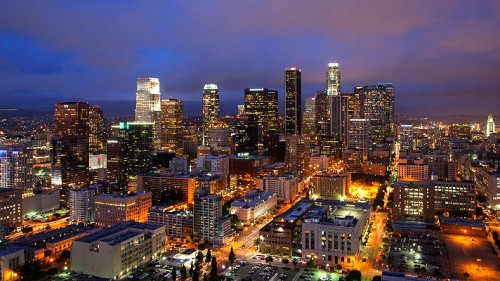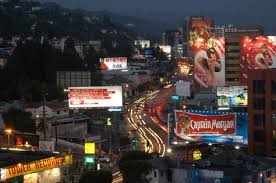
For the better part of the last half century, Los Angeles has been known as a city plagued by urban sprawl. Los Angeles County spans over 500 square miles and houses nearly 3.9 million people, making it home to the second largest metropolitan area in the United States. This sprawl is due to a high level of homeownership, indicated by the surging demand and increased property values throughout the county. However, recent years have seen a shift to people electing to rent near the city center in trendy, up-and-coming neighborhoods, which has contributed to skyrocketing rental rates near the CBD.
The link between the homeownership rate and the rental rate is very closely correlated, especially in an improving economy. Since 2007, the Los Angeles County homeownership rate has been trending downward, reaching a low point in Q2 of 2016 at 46.5%. This decrease in homeownership, coupled with tight credit standards and an increasing population, many of whom are millennials, is driving demand for rental units.
Part of these price increases can be attributed to now-graduating millennials renting well into their thirties. Nationally, the annual share of first-time home buyers is at its lowest ebb in three decades, according the National Association of Realtors. Millennials often find their career plans postponed by jobs. After the recession in 2007, credit tightened up, and their lack of credit makes it hard to buy their first houses. There is also a personal preference demonstrated by millennials to live in more urban areas where housing supply is scarce, but rentals are often available. Los Angeles has been one of many cities throughout the United States which has benefited from this trend, with a revitalized Downtown area and trendy neighborhoods popping up in the urban core.
As a recent article published by the LA Times notes, the average rent in Los Angeles County is expected to hit $1,416 a month in 2018, an 8.3% jump from last year. This could possibly be the largest YOY jump of any city in 2017. As one might expect, this is compounded with a vacancy rate currently at 3.3%, a historic low. This is in part due to millennial demand, but the lack of available housing also plays a part.

The lack of available housing effects the Los Angeles market’s workforce renters. As rents skyrocket because of a noticeable lack of available housing, many artists, teachers, and other young professionals are being priced out of the market. Residents constantly look at the luxury developments taking place, and express outrage over the extravagant rents asked for these high rises.
In Downtown Los Angeles, the up and coming area in zip code 90012 has seen a 36% increase in mostly luxury-based units between 2000 and 2010, leading to a 73% increase in average rent, and a 152% increase in home values. Yet, sleepy Venice over on the Pacific Ocean has seen a decrease of 21 housing units in the same period, and saw its rent increase 78% and home values skyrocket by 167%. So regardless of increased supply in a certain submarket, we can see that the overall demand in the urban core is outpacing supply.
As a matter of fact, the California’s Legislative Analyst’s Office has stated that millions of homes that needed to be built in the past three decades have not been built. Whether due to regulation, Nimbyism, or extravagant land prices, there has not been enough development to meet demand. The LAO report determined that county would have needed to add an extra 1 million housing units in order to keep real estate prices roughly on par with the rest of the country.

Regulation has been particularly burdensome to builders. Countless developments have been proposed in the last decade, but have ultimately been abandoned due to extremely restrictive building requirements. For example, the California Environmental Quality Act often drags out project timelines with years of environmental reviews that other states simply do not have. The CEQA regulation also makes development extremely susceptible to litigation. These lawsuits are often successful in finding small technicalities in paperwork that can cause a project to derail.
Millennials may grow out of their “rental” phase and begin to move into suburbs once their careers stabilize post-recession, but the housing shortage is substantial in the city regardless of societal preferences. The problem is challenging, but it is not overly complex. While many metros across the US have seen increased demand in Multifamily, the shortage in LA is compounded by a shortage in supply. This is the result of 30 years of government regulation which is not friendly to development. While some think that “if you don’t build it, they won’t come,” the current reality is they will come anyway, drive prices higher, and drive out the less fortunate.
